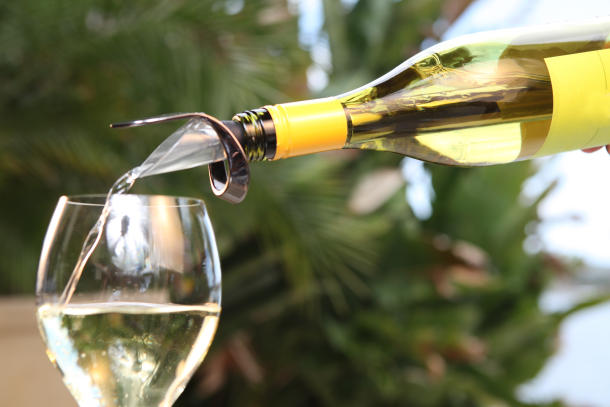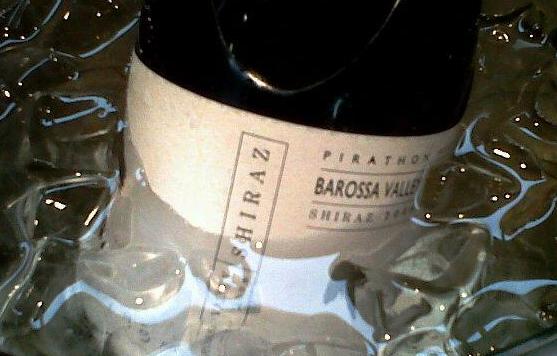
I am a strong believer that size does not really matter. At 5-foot-9, I am quite tall for a female, though I Have never had a problem dating a man that is shorter before. I have lived in flats both big and miniature. And I do not dread any size piece of food set in front of me.
The same rule applies to my wine. I see nothing wrong with the strong, dark fruity gusts of joy that red wines that are elaborate liberally offer. The truth is, they are frequently desired by me. But with these large-bodied, bold-flavored reds that are strong, it is common to also discover heightened rates of booze, and not everybody adores more punchy wines. Others loathe them, running in the other way when they hear the phrase “high-alcohol wines” being used.
For some reason, folks frighten. They have even intimidated me. It occurred when I tasted a group of Napa Valley wines using a buddy – a blogger who has been employed in the wine world for a long time. I picked up a bottle of merlot and flipped it over before uncorking it, expecting to see its alcohol by volume (ABV) resting somewhere around 13 percent, perhaps 13.5 at the maximum. The amount I saw wasn’t even close.
“Woah,” I said, shocked. “The label says this wine is 16.5 percent!” I was not certain I needed to attempt it, and do not regularly see wines high in alcohol that are not fortified.
“Geeze! It is practically a port,” my buddy said, “But you never know, it might be fascinating.”
It was fascinating, really. Even though the wine was really not low in alcohol, it was not that frightening at all. Rather, it liberally offered a particular processed sophistication you simply do not see in simple-drinking, alcohol reds that were lower. It tasted exciting and succulent, although richly concentrated, and did not fill my mouth with the burning senses that less enjoyable, badly made high-alcohol wines frequently cause. Instead, the balance between tannins, acidity and ripe fruit kept the booziness at bay.
There clearly was no escaping the immense character of the wine, plus it reaffirmed my love for large, bold reds. My buddy responded otherwise, and I really could inform the wine had left him feeling somewhat unsettled.
“Perhaps it is simply too hot for me,” he said before dumping his glass and moving on. I could not help but believe the wine had been doomed from the minute I announced its alcohol content.
Our difference in views was nothing uncommon. For years there’s, in the wine world, been an on-going discussion about whether or not high alcohol levels are a a bad or good thing. There are lots of wine lovers, myself included, who want these large, concentrated and complex red wines. But there is also some of geeky wine bloggers, writers, and sommeliers that completely despise these so called “Frankenwines,” and assert they’re exceedingly powerful and hard to drink.
What makes up a “high-alcohol wine” anyhow? For a theory that stirs up such a heated dispute, nobody can in fact concur. If we are talking officially, a “table wine” is one with an alcohol content under 14 percent, and anything over that’s recognized as a “dessert” wine. But the U.S. government additionally defines vodka as a tasteless, odorless, colorless nature, though we are all conscious of the array of flavored vodkas that line shop shelves.
Despite the laws that are clearly old, 14 remains the arbitrary amount high-booze haters have created as the cutoff for booze percent permitted in wines. They smack on the title that is negative over that magic number onto any wine. But I ‘ve a lot of wine-drinking buddies whose vocabulary does not contain the term “high-alcohol wines,” and who are not fazed by any amount recorded on a wine bottle.
The argument might never see an end, but one thing everyone can agree on is the clear difference between the wines of today and those made decades past, when they used to hover around the 12 percent mark. Now, you had have trouble discovering a whole lot of wines. You are prone to fall upon wines with an alcohol content around 13 to 14 percent, with many soaring even higher.
Some specialists blame the increase of alcohol in wines on global warming. Riper grapes, which means a rise in sugar levels are turned out by heightened temperatures in wine regions all over the world. During the wine making procedure, sugar is the thing that gets converted to booze. So the more sugar in the grape juice that is first, the more complex the alcohol percentage will probably be in the finished wine.
Global warming is not always a terrible thing for all wines. There are definite grapes that thrive naturally, and in hotter climates produce wines which are not pretty low in alcohol independently, like shiraz from Spanish garnacha, Australia, and America’s iconic grape, zinfandel from California.
However there’s an increasing bunch of powerful bloggers, writers, and sommeliers that are immune to the steady rise of wines that are larger. They insist the issue goes beyond global warming and starts with leading wine critics, who often give higher scores to higher-alcohol wines, like large cabernets from Napa Valley or the vibrant, rustic reds of the Rhone Valley. These high evaluations are advertised in stores for all consumers alongside their various Malaysia wine shop to see. In the heads of these high-booze haters, the end result is plenty of celebrity-seeking, money-hungry winemakers decided to win high scores who prefer to pick their grapes after and maturer.
Other producers that make boozier wines want to fight the negative attention they get from the elitist anti-high-alcohol wine bunch a couple of various ways. Though it looks somewhat unusual to me to intrude with grapes that lend themselves nicely to larger wines some winemakers add water to overripe crops as a way to dilute the alcohol content of their wines.
Then there is the trick that is tagging: For wines over 14 percent, a margin of error of up to one percent is lawfully allowed in the States. So winemakers are permitted to disguise their largest wines with a somewhat lower amount concealed on the label. That wine you see marked as a desired 14.0 percent may very well be pushing upwards of 15 percent. The European Union does not permit such a big disparity – wines must be correctly tagged within 0.5 percent.
Sometimes, producers really adopt the blot of wines that are larger. Specific winemakers in Australia showcase their most substantial wines with names like “The Complete Fifteen” and “The Ball Buster.”
High-alcohol wine haters do have one valid gripe with these wines – they do not marry nicely with food. Due to this, several prominent sommeliers from wine managers in upscale San Francisco eateries and fashionable wine bars in the East Village refuse to contain them on their wine lists.
While it is a valid argument, there is no rule in order for it to be pleasurable, a wine has to be harmonious with food. Wine is consumed by most Americans with no food anyhow. So while high-alcohol wines might not possess a location at each dinner table, it does not mean there is no place in our lives for them.

However, I do not see what the big deal with high-alcohol wines is. People who adore higher rates of booze find that its intensity brings the ripeness of the fruit out, and when in equilibrium with quality tannins, it can in fact fine tune a wine. There does not have to be anything so terrifying about a wine that packs a little extra heat. The other day I loved the classic rich, jammy flavor of the 2009 Grgich Hill Estate Zinfandel, which clocked in at a boozy 15.3 percent but was full of nature.
High-alcohol wines are too often portrayed as being so overpowering that a rest is necessary after only one glass. It should come as no real surprise to you it is an alcoholic beverage knowing anything in any way about wine. Just drink a little less if you are worried about becoming too drunk. The difference in alcohol content between a wine that’s 13.5 percent and one that’s 14.5 percent is so small that is it nothing to fret over.
This autumn I spent a month traveling through several wine regions in Italy. During my few days in the Veneto, I ‘d my first intro to the precious and daring Amarone, an strong but delightful wine. It is made with dehydrated grapes that sit for up to four months after being decided. When the drying process is completed, they can be incredibly concentrated and raisin-like. Once the grapes are fermented, the end result is a sophisticated, rich, full bodied wine with well-integrated fruit flavors.
Most clocked in approximately 16 percent alcohol by volume, but their thick cherry flavors and full-bodied licorice odors were not so simple, I could not even tell booze-hefty the wines were. I adored the Pasqua Amarone della Valpolicella Classico 2008 – with its huge scents of maraschino cherries and ripe plums, it felt warm but was balanced.
“When I drink Amarone,” said Giovanni, my Italian traveling company, who works for an association of companies in the Veneto, “I understand I cannot drink as many glasses as I ‘d have of something lighter, like sangiovese,” He paused to savor another nip. “But that does not mean I do not still love it with deep fire.” Giovanni subsequently lifted his glass for a pledge.
It’s a fact that high-alcohol wines still have to keep two qualities that are significant – they must be approachable and they should be drinkable. But to me, the alcohol percentage concealed on the label of a wine bottle is just a number.
In regards to your wine, does size matter? Just you could possibly be the judge of that.